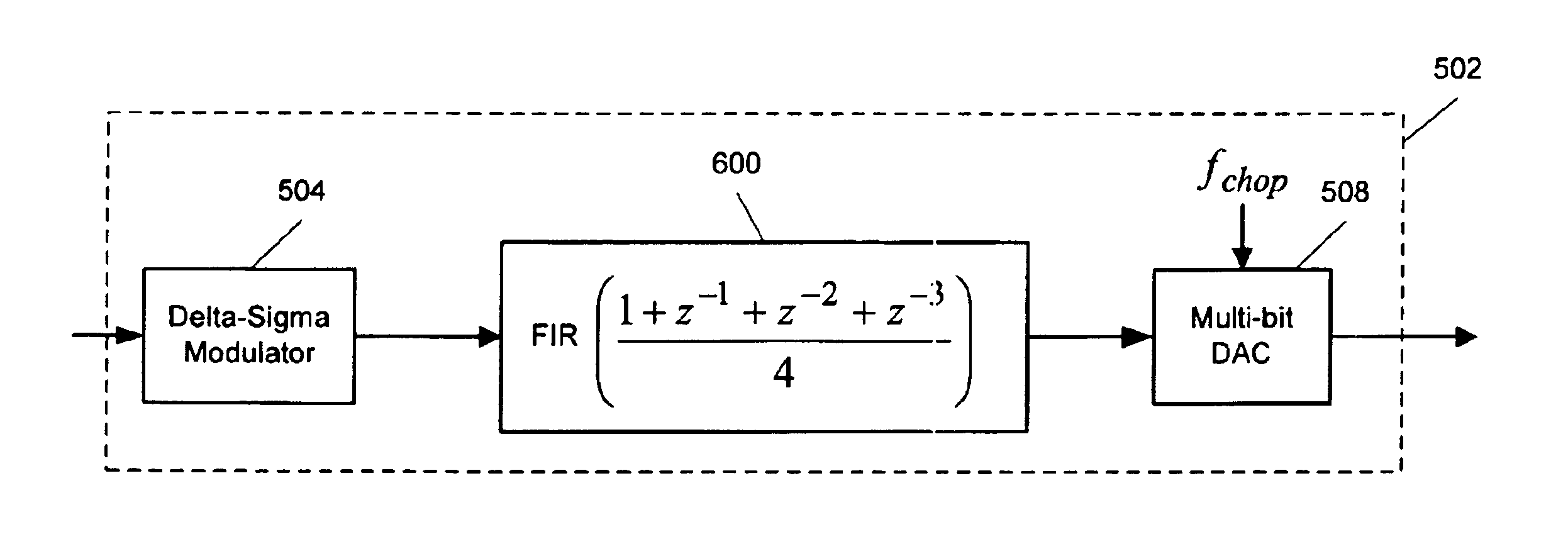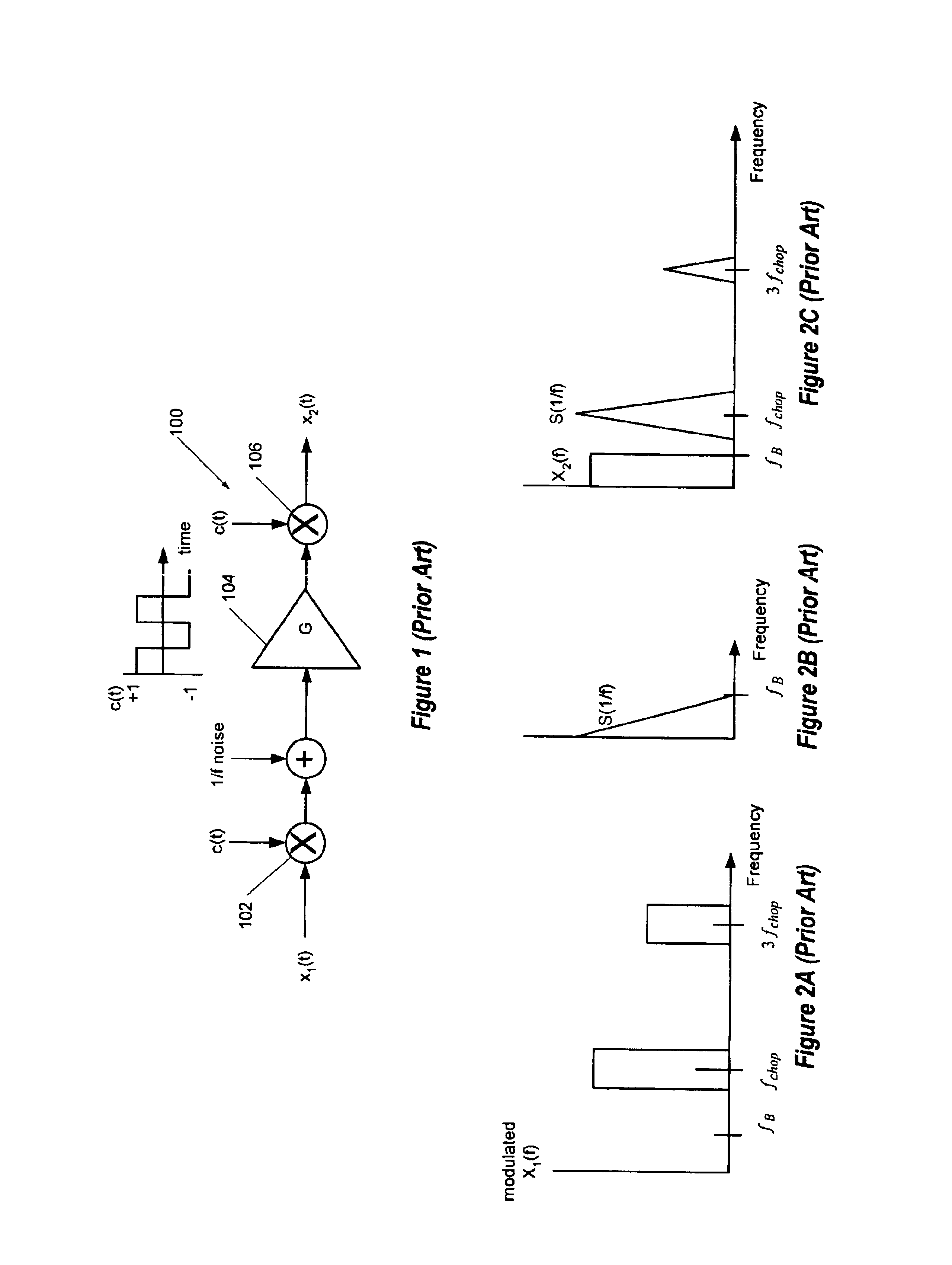Signal processing system with baseband noise modulation and noise filtering
a signal processing and baseband technology, applied in the field of signal processing, can solve problems such as noise to be added into the baseband, and achieve the effect of reducing the introduction of nois
- Summary
- Abstract
- Description
- Claims
- Application Information
AI Technical Summary
Benefits of technology
Problems solved by technology
Method used
Image
Examples
Embodiment Construction
Signal processing technology operates on analog, digital and mixed signals (analog and digital). For example, audio signals, representing a signal of interest and having frequency components residing within a baseband, begin as analog signals and are often digitized through sampling and converted back into analog output signals using digital-to-analog converters (DACs). Audio frequency analog output signals produce sound through a loud speaker, headphones, or other output device.
High performance digital signal processing systems, described in more detail below, are particularly sensitive to noise, even low levels of noise. In one embodiment, to address such noise concerns, a digital to analog converter (“DAC”) includes chopping circuitry. Non-ideal circuit properties can cause parasitic modulation of noise into the baseband of the signal of interest. For example, chopping circuitry often produces parasitic signals that result in the fold back of such noise into a baseband of a digit...
PUM
 Login to View More
Login to View More Abstract
Description
Claims
Application Information
 Login to View More
Login to View More - R&D
- Intellectual Property
- Life Sciences
- Materials
- Tech Scout
- Unparalleled Data Quality
- Higher Quality Content
- 60% Fewer Hallucinations
Browse by: Latest US Patents, China's latest patents, Technical Efficacy Thesaurus, Application Domain, Technology Topic, Popular Technical Reports.
© 2025 PatSnap. All rights reserved.Legal|Privacy policy|Modern Slavery Act Transparency Statement|Sitemap|About US| Contact US: help@patsnap.com



